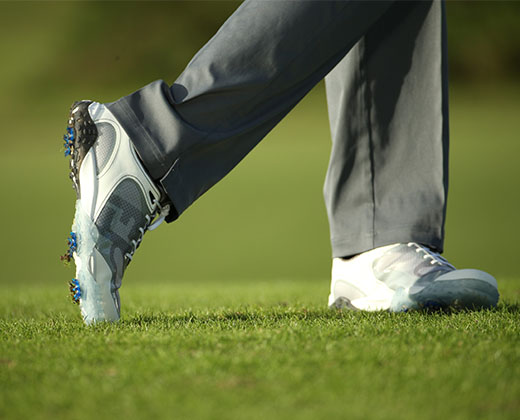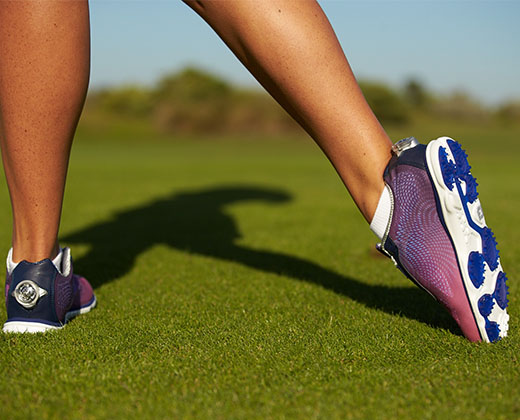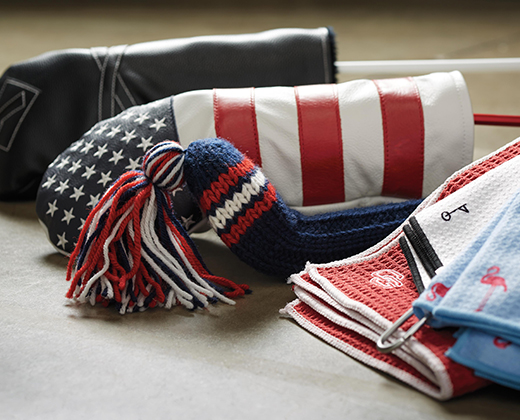When to Replace Your Golf Shoes
Are your golf shoes up to par? Use the following guide to determine if it’s time to upgrade your golf footwear.

So, you’ve noticed something is a little off in your golf game, but you’re not sure what’s causing the problem. You haven’t made any significant changes — you’re using the same trusty clubs, your go-to brand of golf ball, and you were actually striping the ball better than ever until just recently. What happened?
Instead of looking up to the heavens to question the golf gods, try looking down at your feet. It could be that worn-out golf shoes are to blame for your decline on the course.
WHEN IS IT TIME FOR A NEW PAIR?
“The longevity of golf shoes depends on how often they are worn and how well they are cared for between uses,” says Paul McMullen, Golf Content Specialist at DICK’S Sporting Goods. “Golfers who often play in wet conditions, store their shoes in the trunk of their car or infrequently clean the uppers and outsoles may only get one season out of their shoes. Golfers who clean their shoes after each round and store them in the proper environment after each use may get anywhere from three to four seasons out of their shoes.”
Are you feeling off balance during your swing? You might be tempted to start tinkering with your swing, but the true fix may be found in your footwear.
“The loss of traction is the most glaring sign that you need to update your golf shoes,” says Paul. “If you notice yourself frequently slipping during the stroke or while walking the course, it’s likely time to replace the shoes.”
If water has started to seep into your shoes, it is certainly time to get a new pair.
“Comfort is crucial when it comes to your golf footwear,” says Paul. “If the insoles are worn down, or the uppers have lost their waterproof or water-resistant qualities, updating your footwear will ensure your feet remain comfortable through the entire round.”
WHEN TO CHANGE YOUR SPIKES
If you’ve noticed a dip in performance from your spiked footwear, you may not need to replace the shoes — it might just be time to change the golf spikes.
“Cleats in certain parts of each shoe wear differently because of the natural motion of your swing and the demands you are putting on the outsoles,” Paul says. “Although the cadence for changing cleats depends on a variety of factors, including the number of rounds you play and the conditions in which you play, golfers commonly change out spikes once or twice a season.”
FINAL THOUGHTS
If you do decide it’s time for a new pair of golf shoes, get the most out them by showing them the proper care.
“Golf shoes create the crucial bond between your feet and the ground, so keeping them in the best possible shape is imperative to success on the course,” says Paul. “If uppers are not properly cared for, any waterproof or water-resistant properties will diminish over time and lead to soggy feet and discomfort during poor weather. If outsoles are not cared for properly, they will lose traction and cause players to slip while walking the course and during the stroke.”
To learn how to extend the life of your new or current pair of golf shoes, check out our article on “How to Care for Golf Shoes.”








